






















The comprehensive research considers the competitive environment of the U.S. grocery landscape and the regional chains as well as tactics and challenges they encounter under the stiff competition from big-box retailers and dollar stores. By scraping grocery store databases, you get in-depth analysis of competitors' situation by the regions, their market dominance, number of shops they run., and strategic principles they apply.
From Safeway's control of the Western territory down to Publix's stronghold in the South, every chain is explored regarding its local positioning and expansion pursuits. In addition, regional players' agility and innovation are seen as crucial factors in succeeding in the fast-paced retail market. It also shows how enhancing customer relationships and improving in-store experiences are of the utmost importance for staying competitive and gaining market share in the home grocery sector.
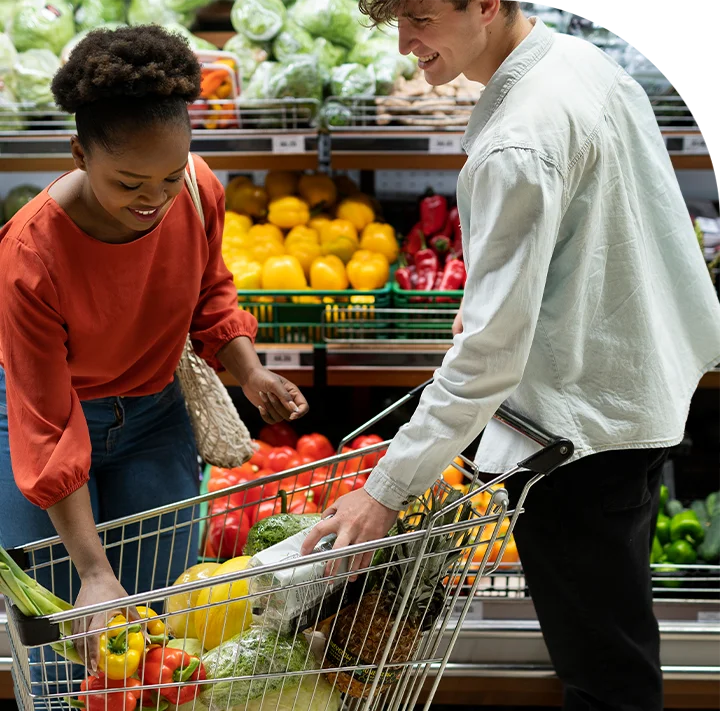

In the intensely competitive commercial arena of the grocery business, the regional chains in the Northeast, South, West, and Midwest sections of the U.S. are executing resourceful strategies to fulfill the changing demands of customers without compromising financial endeavors. While brands such as Walmart and Amazon's Whole Foods are already fiercely competing for market dominance, the smaller stores are creating specialized strategies to fight and prevail. By eradicating data on grocery locations, regional supermarkets are tailoring their offerings to meet local flavors and demands. Besides that, this specialized approach makes them unique from giant industries and helps build closer relationships with their communities. Success depends on the fact that an entrepreneur must do two things: keep up with customer trends and stay financially stable using grocery supermarket data scraping. In this dynamic setting, agility and innovation are paramount elements for regional players competing in the highly competitive environment of the retail grocery market.
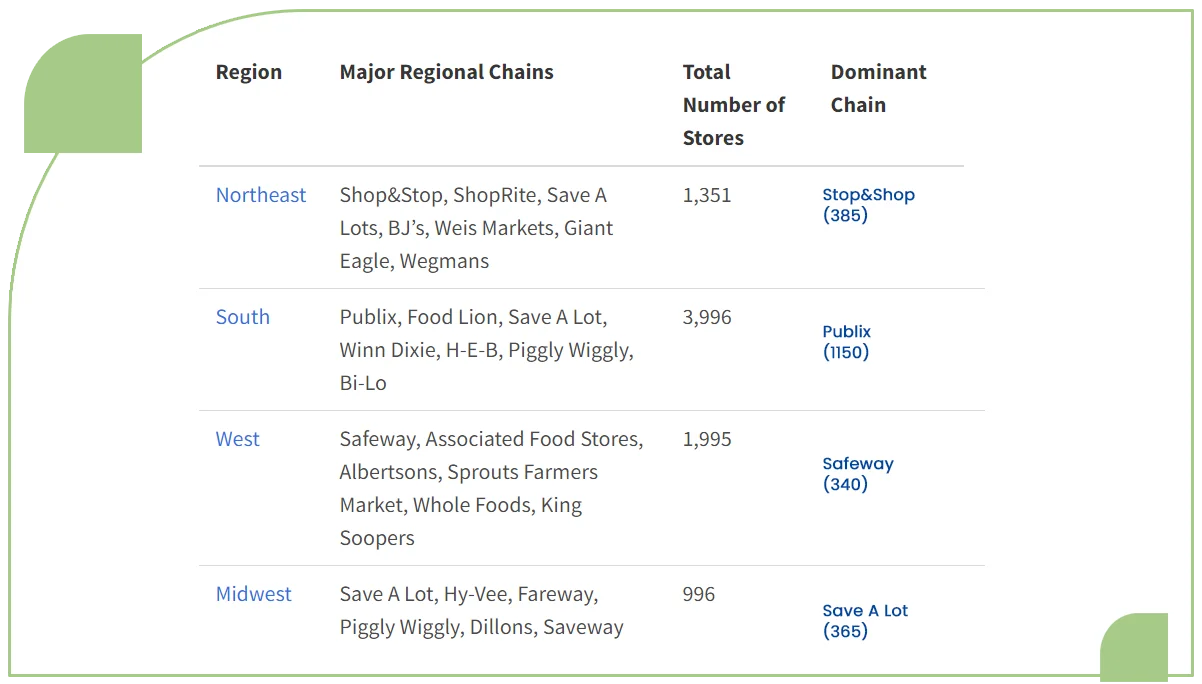
Our grocery supermarket data scraping services revealed that Stop and Shop holds the lead in the northeastern market, with 385 stores spread across five states. The brand's vast web also promotes its reputation when people are looking for excellent produce in the area.
Publix maintains its dominance in the South market with 1,150 stores across seven states. This broad coverage approach emphasizes that Publix serves customers not only in the South but also all over the United States.
Save A Lot is prominent in the Midwest, and a chain of 365 stores is found in five states. This wide range of stores highlights the company's commitment to making healthy food available at reasonable prices throughout the Midwest.
Safeway rules the Western region by virtue of having about 340 outlets in 10 states. The company's wide range of locations, especially in the Western region of America, portrays it as a grocery supplier admired for the quality food it provides.
You can easily set details and data on the US's most popular supermarkets by scraping grocery supermarket data and downloading the dataset from our data store.
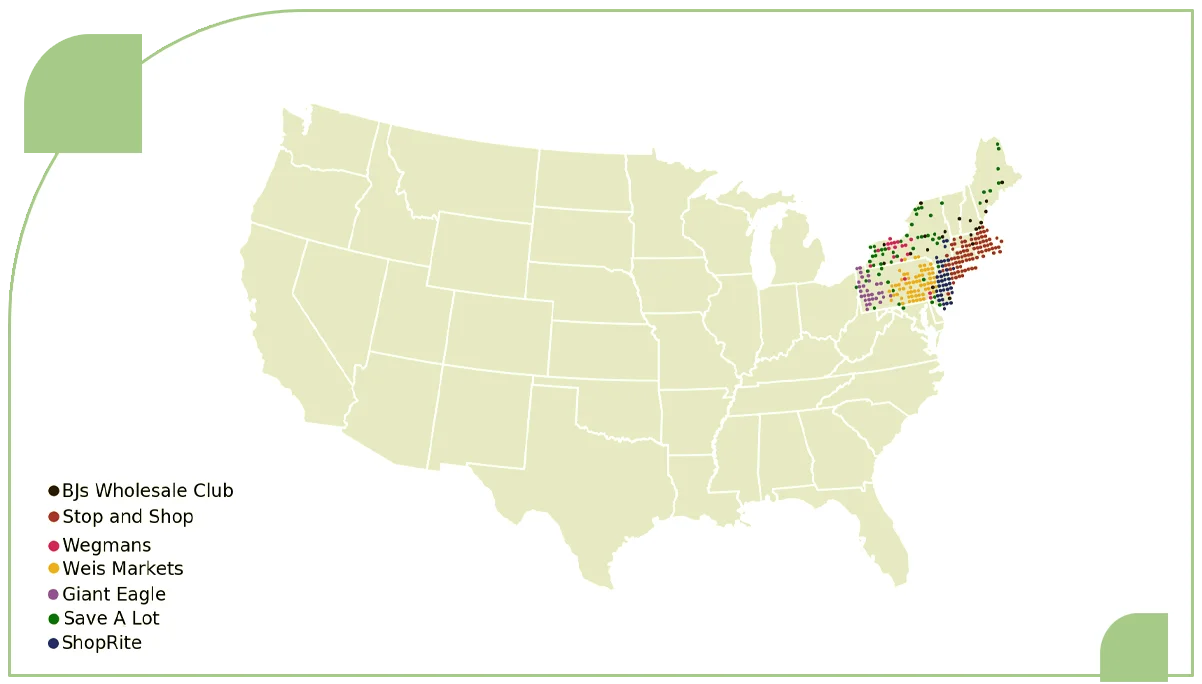
Stop and Shop is the leader in Connecticut, Massachusetts, and Rhode Island, while ShopRite is the dominant player in New Jersey.
If you live in Pennsylvania, you may have an option to choose between Weis Markets or Giant Eagle because they are separated into two parts of this state. BJ’s Wholesale Club and Save-A-Lot are the preferred stores in Maine, New Hampshire, and the north of New York.
Wegmans primarily serves New York in its homeland and has a limited presence in Pennsylvania, New Jersey, and Massachusetts.
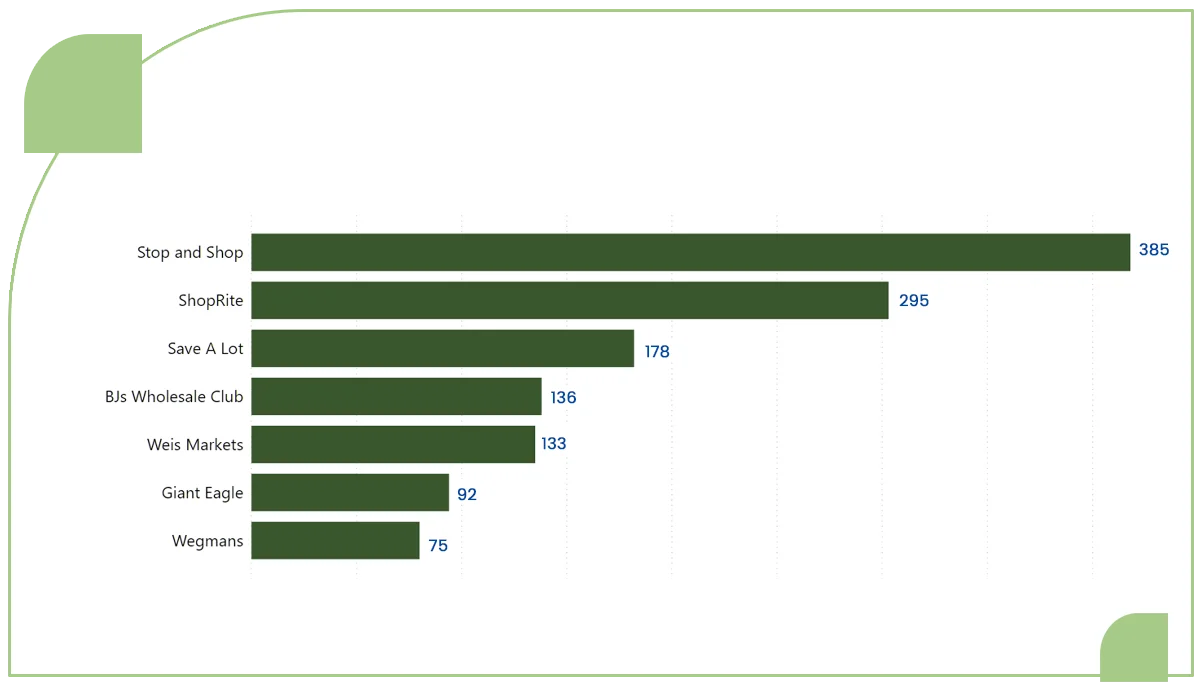
Stop & Shop has opened 385 stores in 7 states and offers customers a versatile range of products and services. On the other hand, ShopRites manages 345 stores, of which 45% are located in New Jersey and mainly focused on the needs of residents. These numbers reflect how widespread and dominant both grocery stores are, as they occupy this area's number one retail spot. While they may vary in geographical scope, both companies continue to deliver excellence by offering their customers quality products and exemplary services. Such cooperation among retailers helps them increase their share in the retail market and change how people shop and what they expect as consumers. The companies have recorded success through expansion strategies and customer centricity, which have played a key role in enriching communities and promoting economic growth in their localities.
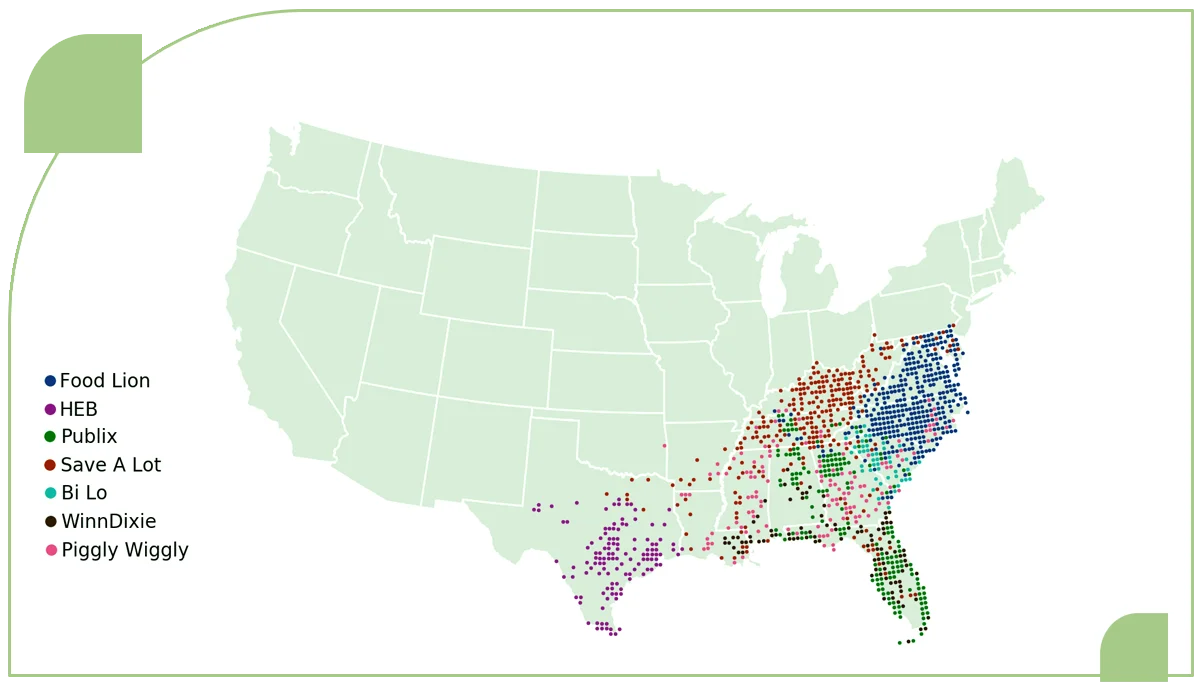
Based in North Carolina, Food Lion operates in the South-Atlantic area comprising Maryland, Virginia, and the territory of its origin. However, Publix and Winn-Dixie, headquartered in Florida, dominate the grocery landscape in Florida, thus telling about their power in the Sunshine State.
H-E-B has become highly concentrated in Texas, but its presence in Louisiana indicates a restricted number of retail outlets. As reported in a 2020 grocery retail report, H-E-B ranked first among American grocers and was positioned among trustworthy brands within the United States for the second time.
These grocery stores are almost identical in terms of their regional strengths and market share and have adopted their areas’ respective positioning. Whether an old-fashioned brand or a new player in the grocery industry, they continue to adjust to the ever-changing market landscape by providing a variety of options to the customer while retaining their reputation for quality goods and services.
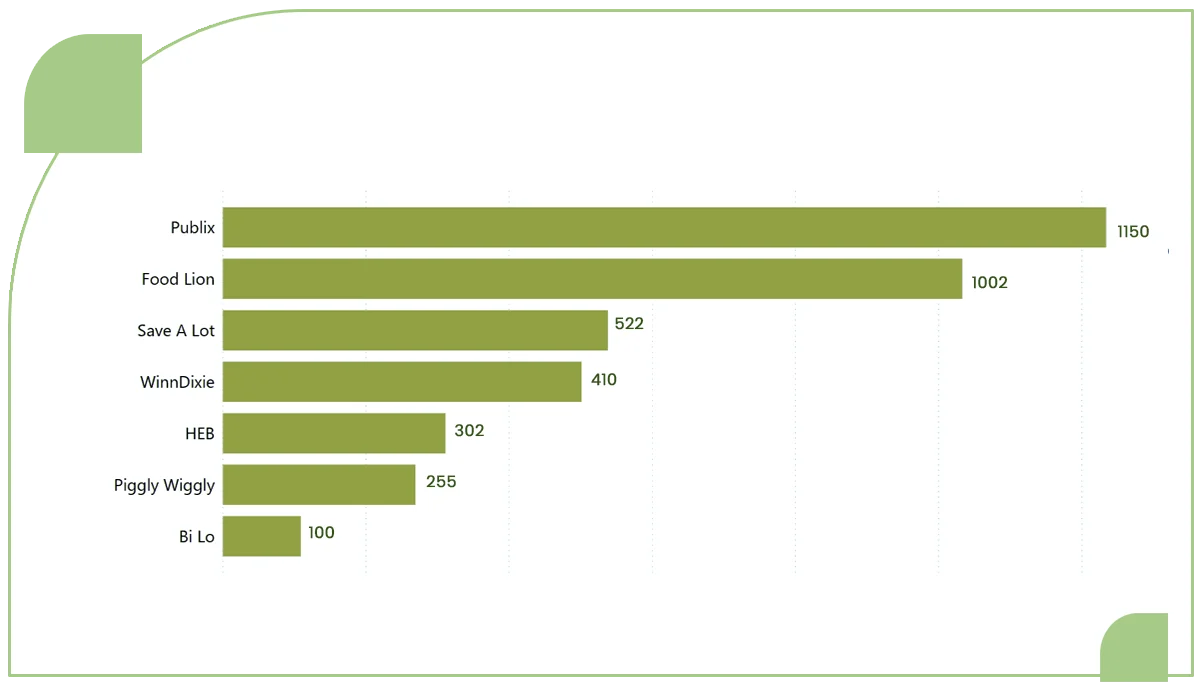
With our grocery supermarket scraper, we revealed that Publix operates in nine states of the South, as its 70% of stores are located in Florida. Food Lion highlights its largest share in the South Atlantic belt, where approximately 60% of its stores are located in North Carolina and Virginia.
Throughout its 502 stores, 410 of which are in Florida, Winn-Dixie commands a massive presence within the state. Such numbers confirm an intentional distribution policy within these grocery chains, with each one targeting a specific area to develop a strong position in the competitive market.
Food Lion's concentration implies that the company succeeds in serving communities well in the South Atlantic states, while Publix's clear connection with consumers in the local communities of Florida makes it the dominant supermarket chain in the Sunshine State. On top of its already vast coverage in Florida, Winn-Dixie becomes an even more integral part of the state’s grocery industry by satisfying customers’ unique requirements in a number of locations.
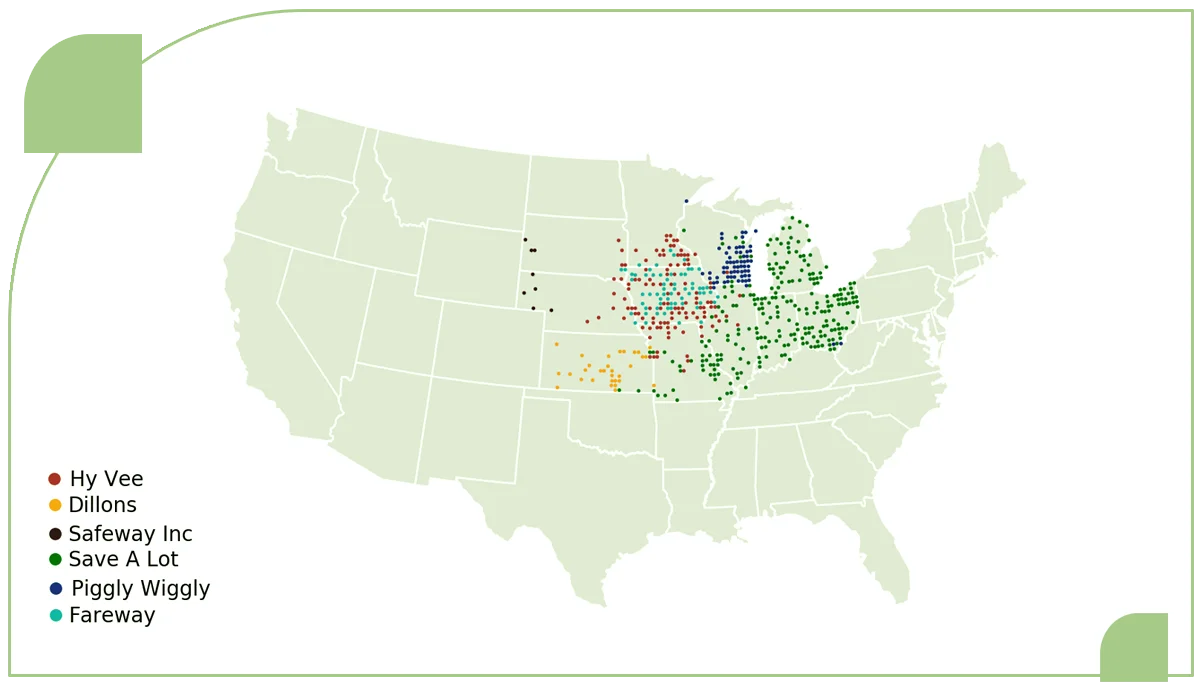
Save-A-Lot expanded its influence beyond the southern boundaries and can now be found in Michigan, Ohio, Indiana, and Illinois. Such intensive coverage reflects the company's dedication to providing discounted groceries and vital products to customers in various regions of the Midwest.
In Iowa, Hy-Vee and Fareway stores are equally distributed, and their abundant places make shopping convenient everywhere. It grants convenient access to the residents across the state and contributes to the chains becoming essential elements of Iowa's shopping environment.
On the other hand, Piggly Wiggly still rules in Wisconsin, with 80% of the total number of stores in the southern part. This determination reflects Piggly Wiggly's prominent position in the state and the company's commitment to continue serving its customers throughout the region, either in the urban or rural setting. Thus, it consolidates its reputation as a reliable and preferred grocery source in Wisconsin.
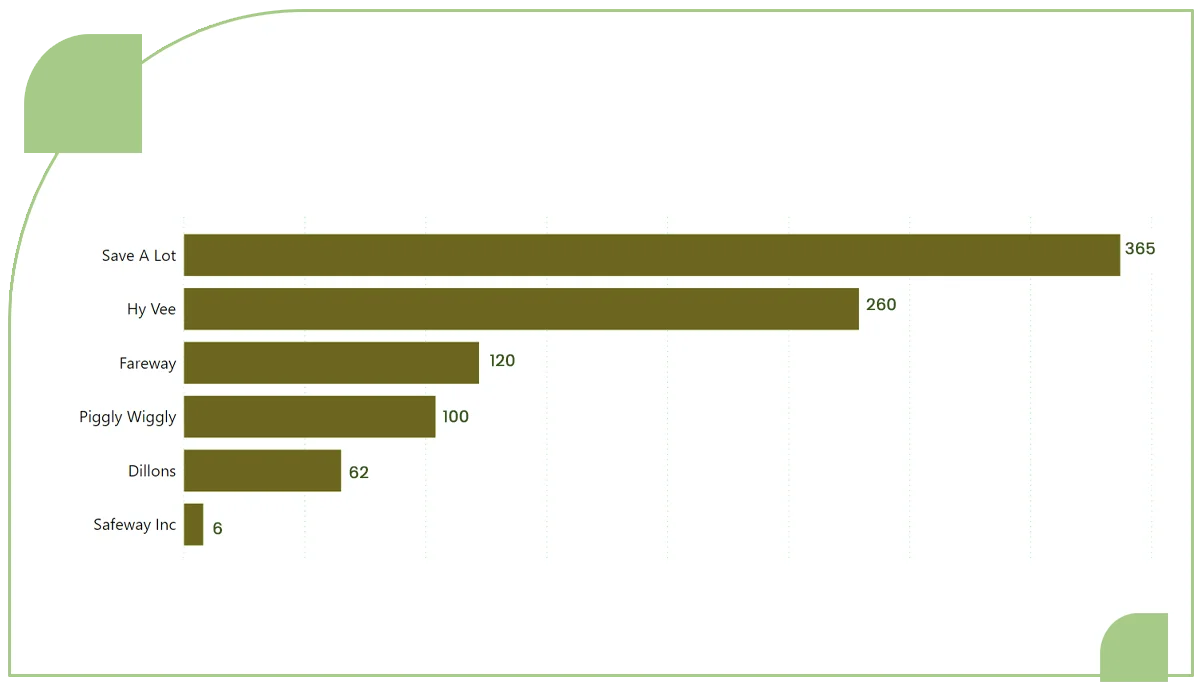
Save-A-Lot has a large footprint, operating 365 stores in 7 Midwest states. More than half of Hy-Vee's stores are located in Iowa, which indicates that the brand has a strong presence in the state. Dillon's, a division of Kroger's, operates exclusively 72 stores within the Kansas market, showing that the company wants to serve communities in Kansas.
These figures depict grocery chains' strategic distribution across the Midwest, each targeting particular areas to fulfill the consumers' different shopping needs. Save-a-lot's countrywide coverage markedly proves its interest in making the most accessible goods possible in every state of the USA. At the same time, Hy-Vee's dominance in Iowa suggests it has become an industry leader in that region. Just as Dillions adheres strictly to serving the state of Kansas with superior quality goods and services, Dillons also seeks to shape the Midwest grocery scene, thus contributing to its ever-growing vitality.
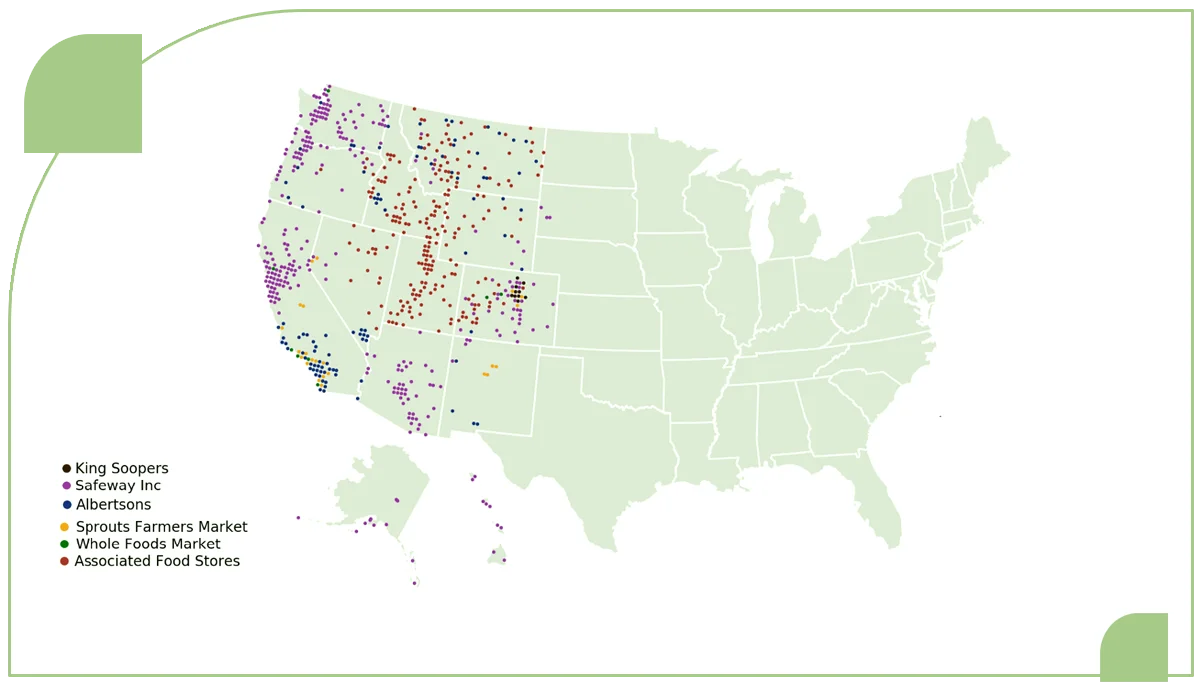
Safeway supermarkets have achieved fame and broad influence in the western states, especially in the spacious West Coast region. This strategic positioning also considers consumers' choices and requirements in this area, where Safeway is known to be a reliable supplier of quality food and necessities.
At the same time, Albertsons and Sprouts Farmers Market shops are located throughout the lower parts of California, where most residents live. Working together, they offer consumers an extensive choice of fresh organic products and other specialties, improving the shopping experience in California.
In comparison, the Associated Food Stores is the King of the Market in States like Montana, Idaho, Wyoming, Nevada, and Utah. Their extensive impact indicates their dedication to the areas in which they serve and their role in supporting communities by providing essential goods and promoting local economies. Strategic distribution and an emphasis on supplying regional needs make these retail chains the critical players in creating the retailing market of the whole western United States region.
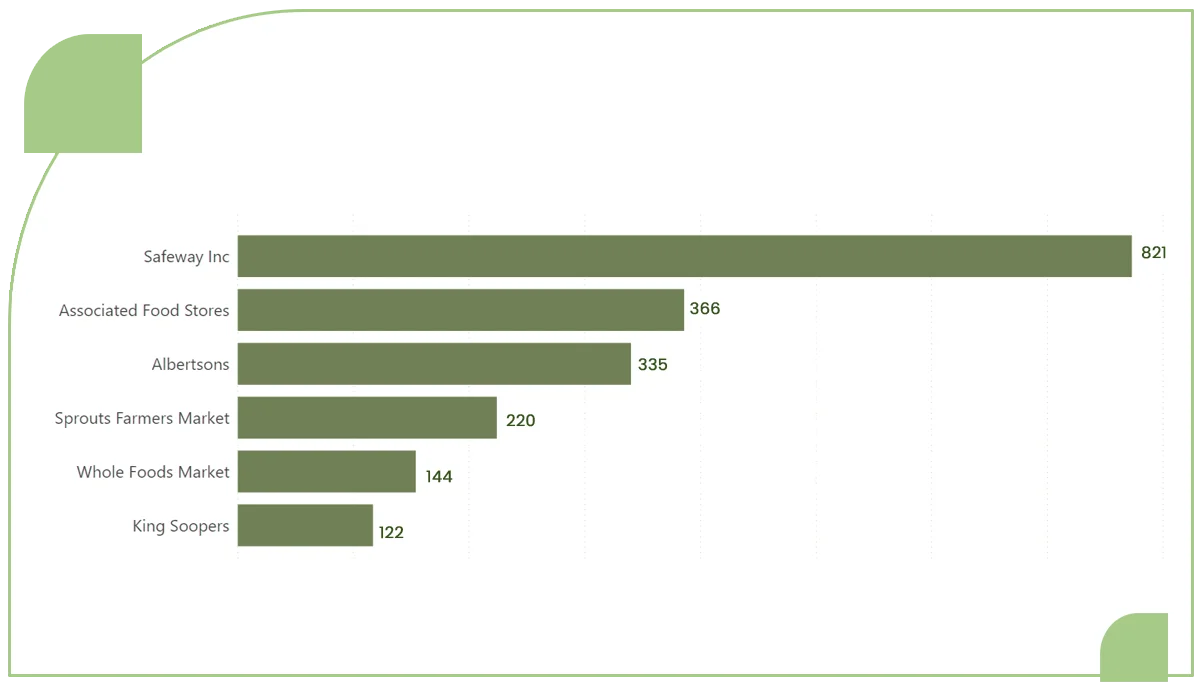
In the western states, Safeway has 821 stores, the majority of which are in California, including 265 stores only here. In addition, Safeway operates two more states in the Midwest. King Soopers, a grocery brand owned by Kroger, has 122 stores in Colorado and just one in Wyoming.
Whole Foods Market, which has yet to be conspicuously marked on the map yet has a considerable presence, is still owned by Amazon. It has 88 stores in California and is planning to launch new stores.
Such numbers emphasize that these supermarket chains have followed a strategic distribution and expansion plan in the Western region. Safeway and King Soopers are the dominant players in California and Colorado, respectively, showing their resilience in these regions. In addition, Whole Foods Market's ambitious growth strategy represents the organization's determination to meet the dynamically changing needs of customers in the competitive retail environment.
In a retail environment marked by competition, regional chains strive to offer the same level of convenience, flexibility, and value as big box retailers and dollar stores. Technological advancement further complicates the challenge, as it puts power into the hands of consumers, who can now compare prices across multiple stores before making a purchase.
E-commerce is only one part of online shopping, and Amazon has taken the initiative to combine e-commerce with physical stores. In addition to the daily operations, Whole Foods stores have new Prime lockers that are easy hubs for picking up groceries and Amazon products. The Survival and growth of regional chains largely depend on their timely adoption strategies to amplify consumer relationships. It involves the creation of robust customer relationships and increasing in-store experience through providing services such as clinics and pharmacy centers – features of shopping that cannot be imitated in the digital setting.
Regional chains will survive, providing they are prepared to be flexible and innovative in an ever-changing retail environment where digitalization plays a significant role.
Are you in need of high-class scraping services? Food Data Scrape should be your first point of call. We are undoubtedly the best in food data aggregation and mobile restaurant application scraping, and we render impeccable data analysis for strategic decision-making. With a legacy of excellence as our backbone, we help companies become data-driven, fueling their development. Please take advantage of our tailored solutions that will add value to your business. Contact us today to unlock the value of your data.




